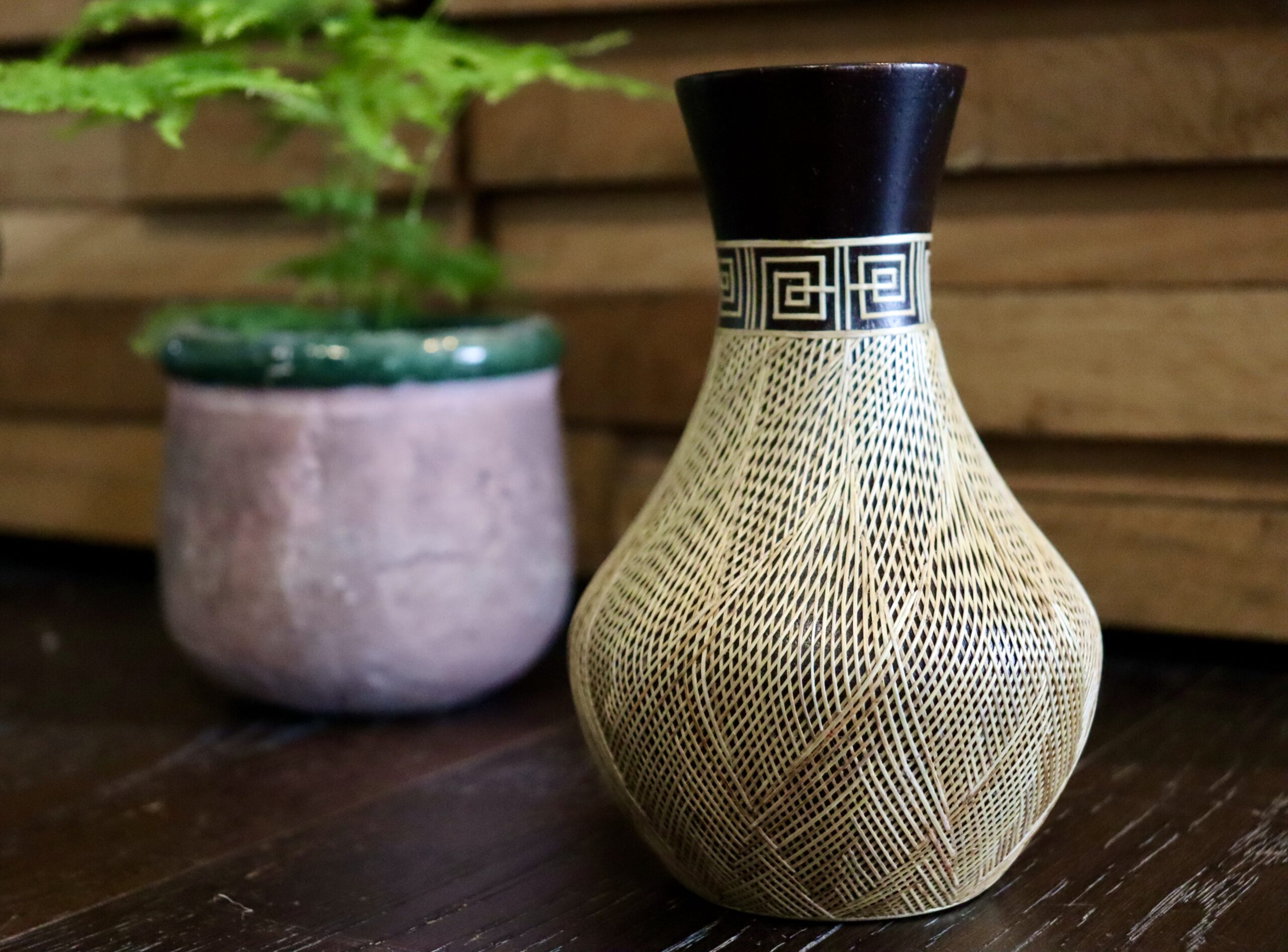Description
One off small wooden vase, decorated with non-coloured wheat.
The tamo art technique is a traditional form of straw marquetry used in the Nariño region of Colombia. The natural fibres include the stems of wheat, barley and totora, a reed which is sourced from their local lake ‘La Laguna de la Cocha’.
The wood used is either pine, cedar or oak. This is all hand carved using traditional tools and techniques. The wooden base is decorated using natural fibres which have been, split, cut and applied to the wooden base using a number of techniques, such as woven, mosaic, spiral and layered. A protective lacquer is then applied.
These collectable objects are for those who appreciate the dedicated time and patience which goes into each piece, as well as the appreciation for traditional technique of straw marquetry while using using nature to create.
The De La Cruz family create these Tamo pieces, you can learn more about them here.
Also, have a quick read through our care instruction below
One off small wooden vase, decorated with non-coloured wheat.
The tamo art technique is a traditional form of straw marquetry used in the Nariño region of Colombia. The natural fibres include the stems of wheat, barley and totora, a reed which is sourced from their local lake ‘La Laguna de la Cocha’.
The wood used is either pine, cedar or oak. This is all hand carved using traditional tools and techniques. The wooden base is decorated using natural fibres which have been, split, cut and applied to the wooden base using a number of techniques, such as woven, mosaic, spiral and layered. A protective lacquer is then applied.
These collectable objects are for those who appreciate the dedicated time and patience which goes into each piece, as well as the appreciation for traditional technique of straw marquetry while using using nature to create.
The De La Cruz family create these Tamo pieces, you can learn more about them here.
Also, have a quick read through our care instruction below
Materials and Dimensions
- Ie 40cmx40cm
- Base of pine wood, cedar wood, oak wood
- Wheat and barley, totora
- Please note that as this is made of wood and not suitable for water
As we use mainly natural materials it is important that we care for them best we can. We have tried things like adding resin to our melon seed jewellery – which does make them more resistant – but it takes away from the natural yumminess of them!
Tamo – Due to the natural colourants used in dying the wheat and natural fibres, these need to be displayed away from direct sunlight – which could cause the colours to fade over a prolonged period. For cleaning, a brush (I use a clean paint brush), or a damp cloth can be used to wipe over the items.
Melon seed jewellery – Avoid submerging these pieces of jewellery in water for prolonged periods (– unless you planning on growing some melons). Washing your hand is fine, but when submerged over long periods (i.e. swimming, bath, washing up) the seeds become soft (normal for seeds) and are then more susceptible to damage until dry again. Store in a cool, dry place with airflow away from direct sunlight. Prolonged periods in direct sunlight could lead to fading of the natural dyes. A clean paint brush is a great way to give these a bit of a clean if needed.
Flower jewellery – These are pretty sturdy pieces of jewellery, you can swim, surf and sleep in them.
Dispatched in 1-3 working days plus courier used
Related Products
Related products
-
All
Melon Seed Hoop Earrings // Earth Tones
£15.00 – £17.00Price range: £15.00 through £17.00 Select options This product has multiple variants. The options may be chosen on the product page -
All
Melon Seed Hoop Earrings // Multicolour
£15.00 – £17.00Price range: £15.00 through £17.00 Select options This product has multiple variants. The options may be chosen on the product page -
All
Melon Seed Hoop Earrings // Rasta
£15.00 – £17.00Price range: £15.00 through £17.00 Select options This product has multiple variants. The options may be chosen on the product page







